FROM CLUB CLASS TO WORLD CLASS – A SALUTE TO BISHAN BEDI

By:- Venkat Sundaram
Email:- venkswin@yahoo.co.in
He said that as he was about 70 kms away, we shall meet at my friend’s place, in Launceston, and he would get the ingredients and some utensils. We shall all combine our cooking talents and toss up something palatable. Bishan has always had more than a passing interest in cooking, and I was confident, having sampled his offerings, that the food would be more delectable than palatable!
And what an experience it turned out to be! Here we were, three families, all hard at it – chopping, washing, marinating, frying, steaming, blending, and….for more than 5 hours! Often, as the utensils available were not large enough to cook for the nearly 25 guests, the same dish had to be prepared 2 or 3 times! Yes, it was some experience, but when it came to 7 in the evening, the cooking was complete and all of us were quite exhausted. “Okay now let’s get the drinks table ready and clean all the glasses.” Bish, as we called him, was not done yet.
It was an absolutely enjoyable “do” with the affable Pakistani players, including several legends like Zaheer Abbas, Javed Miandad, Mudassar Nazar, Shafqat Rana, Iqbal Qasim et al relaxed, and at home, millions of miles away in Australia. There was laughter, jokes, toasts and stories. Above all, the quiet elegance and care of Bish was written all over.
This, an effort to reach out to friends, and fellow cricketers, in a foreign land; defy the odds of having to create a culinary experience in defying circumstances, in many ways, epitomizes Bish. Warm hearted, brazen, friendly but clear thinking in a way encapsulates Bishan Singh Bedi.
I met Bish for the first time in 1970, as I made my debut in first class Cricket for Delhi. He was not available for that game, and I had to play against the then Ranji Trophy champions, Bombay, as they were then called, at the Brabourne Stadiium. Delhi were a rag tag team with no big names; with a veteran as captain, and expectedly the four-day match ended in three days – Delhi completely outplayed and defeated by an innings. To a young debutant the chasm that separated the two teams seemed insurmountable. While I was elated at having made a successful debut, the hurt and pain at losing without the semblance of a contest made me shudder. It was painful as I was always competitive and held some self-pride. To see my seniors take a laid back, a defeated attitude, hurt. We are not so bad, are we? This thought plagued me as we made our way back, by train to Delhi.
And while reflecting, and recuperating from the thrashing, a steely resolve settled in – we must prove, one day, that we are as good if not better than the defending champions of the Ranji Trophy. “Defending champions” sounded good; will Delhi ever reach that level?
With this “fiery” introduction to first class Cricket and with tepid thoughts I joined the pre-season practice nets at Ferozeshah Kotla grounds and there was Bish in his colorful patka welcoming us. He had been appointed captain of the state side. “I did not readily accept the position; in fact, I declined it initially as I informed the then President of Delhi Cricket Association that I may not be able to comply with his views and this may lead to friction.” How typical of Bish and again an introduction to his anti-establishment approach. He informed the President that he would like a “free hand” – a statement no administrator likes to hear – in running Delhi Cricket. It was the start of a long battle with many subtle, and not so subtle, undertones that gripped cricket in Delhi, the North, and Indian Cricket.
“Put on your pads Venks and let’s see you bat” hollered the skipper. Delhi cricket was usually till then a few warm up stretches, a 15-minute net session and a few catches! Hardly surprising that the performance of the squad was deplorable. The first day with Bish changed all that. “You cannot be a match winner batting ten minutes, keep batting.” Music to my ears; and for the first time I batted for half an hour with the main bowlers testing me in every way. Most of the seniors were groaning after the first day at nets, as the session went on for nearly 6 hours. Extensive 2-hour fielding sessions; lots of running and sprinting, calisthenics, and stretching tested the fitness levels both physically and mentally. The culture of the side began, slowly, to change. The old timers were exposed and new blood was encouraged. Yes, there were ripples of griping but Bish would not hear of it. “If you cannot handle this, the door is open; do something else that you enjoy.”
Before I discuss the evolution of Delhi, and North Zone, as a power house of cricket in India let me share a few thoughts of the culture and ethos of North India. Bishan was from Amritsar, in Punjab. The famous Golden Temple, with its gold canopy and hallowed surroundings, is an ocean of peace and tranquil. Yet, it is from the North that invaders swept into India. The local population has a rich military heritage and nearly every family has a soldier in its ranks. Tales of heroic acts on the battlefields often add a special sparkle to discussions in the late evenings. A hard working, industrious, population the hardy North Indian is fond of exploring new frontiers, willing to travel, and chance his luck in native and overseas conditions. Nothing deters him, not language barriers, or alien repasts or staying away from home and hearth seeking a fortune. They are hale fellows in their attitude and blessed with a never say die spirit. A large percentage of the population is employed in the farming sector and their efforts provides nearly seventy percent of India’s food basket.
Cricket in the North, from partition days revolved on fast bowlers hurtling down pacy deliveries on matting wickets. Blessed with six months of cool weather, the hardy fast bowlers, tall and physically fit, were a real handful. Batsmen who were willing to work on their technique were a select few and most matches finished well within the time limits. Low scoring matches were the rule, the odd century or better, the exception. Spin bowling was so alien to their psyche that to see a crafty trundle was sure to surprise and shock the viewer.
Bish was a graduate of Hindu College, Amritsar, an institution that promoted the all-round development of its students. It was here that Bish under the care of his then mentor, Prof Gyan Prakash, got interested in the craft of left arm spin bowling. He may not have had great icons to follow in his home state but India had a distinguished group of great spinners. The likes of Ghulam Ahmed, Vinoo Mankad, Subhash Gupte and a number of first-class cricketers like Durrani and Nadkarni, were already popular and well known. In this mix Bish was making important strides and catching the eye of men who mattered. His shift from Punjab, where he made his first-class debut as a 16-year-old, to Delhi, the national capital but in cricket terms pretty redundant, was a brave and life changing decision. Moving from the extreme North to the centre would have, then, been a challenge but Bish probably understood that Delhi would offer more opportunities and enable him to raise his stock and reach new heights. Despite its basic infrastructure, Delhi was where the Board of Control for Cricket in India was formed and was one of the then five founding Test centers in the country.
Early in the piece Delhi cricketers realized that playing for the state under Bish was not going to be a bed of roses, far from it. The hard task master that he was, Bish was a nightmare to the reluctant or the non-committed. He was fitness driven, given his stocky frame, and unathletic legerdemain realizing that a physically fit athlete would add so much to the team. It was an age where you learnt by trial and error. Running twenty plus laps were a daily grind, followed by hours of catching practice. If that did not tire you, well there was stair climbing and striding to follow. When you went into the nets to bat, it was normal to run three or run four followed by a quick run two! “It is when you are mentally, and physically, tired that your concentration levels are tested. So push yourself and see the results.” Modern biomechanics and trainers would frown on such physical fitness regimes, but a first-class Cricket season then consisted of very few matches say three or four matches, unless the team qualified for the knockout rounds.
It was in such circumstances, under the wings of a master spin bowler, that Bish moulded a team of world beaters.
(Venkat Sundaram is a former First-Class cricketer. This piece is an extract from the book ‘Sardar of Spin – A commemoration of the Life and Art of Bishan Bedi’ and a tribute to his skipper on his 75th Birthday, ie September 25, 2021)

